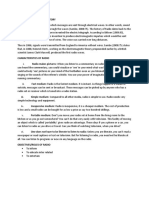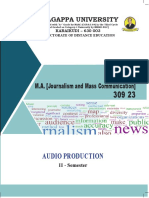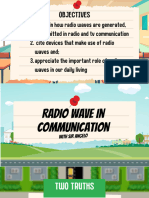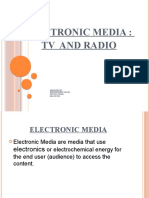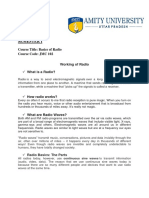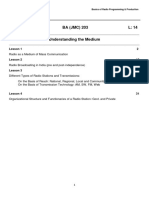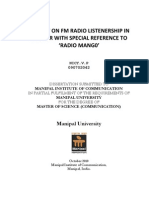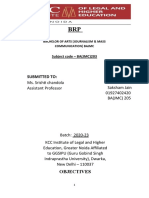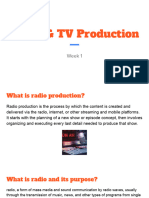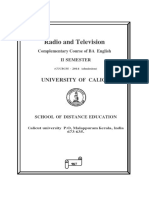0% found this document useful (0 votes)
8 views2 pagesRadio Programming Revision Notes
Radio is a communication medium that transmits audio content using electromagnetic waves, known for its cost-effectiveness and broad reach. The history of radio includes key milestones from the late 19th century, such as Marconi's first wireless signals and the establishment of AIR in India. Various radio programs include news, talk shows, discussions, interviews, features, and documentaries, with types of radio including FM, AM, satellite, community, and amateur radio.
Uploaded by
VIVEK KAUSHIKCopyright
© © All Rights Reserved
We take content rights seriously. If you suspect this is your content, claim it here.
Available Formats
Download as PDF, TXT or read online on Scribd
0% found this document useful (0 votes)
8 views2 pagesRadio Programming Revision Notes
Radio is a communication medium that transmits audio content using electromagnetic waves, known for its cost-effectiveness and broad reach. The history of radio includes key milestones from the late 19th century, such as Marconi's first wireless signals and the establishment of AIR in India. Various radio programs include news, talk shows, discussions, interviews, features, and documentaries, with types of radio including FM, AM, satellite, community, and amateur radio.
Uploaded by
VIVEK KAUSHIKCopyright
© © All Rights Reserved
We take content rights seriously. If you suspect this is your content, claim it here.
Available Formats
Download as PDF, TXT or read online on Scribd
/ 2





